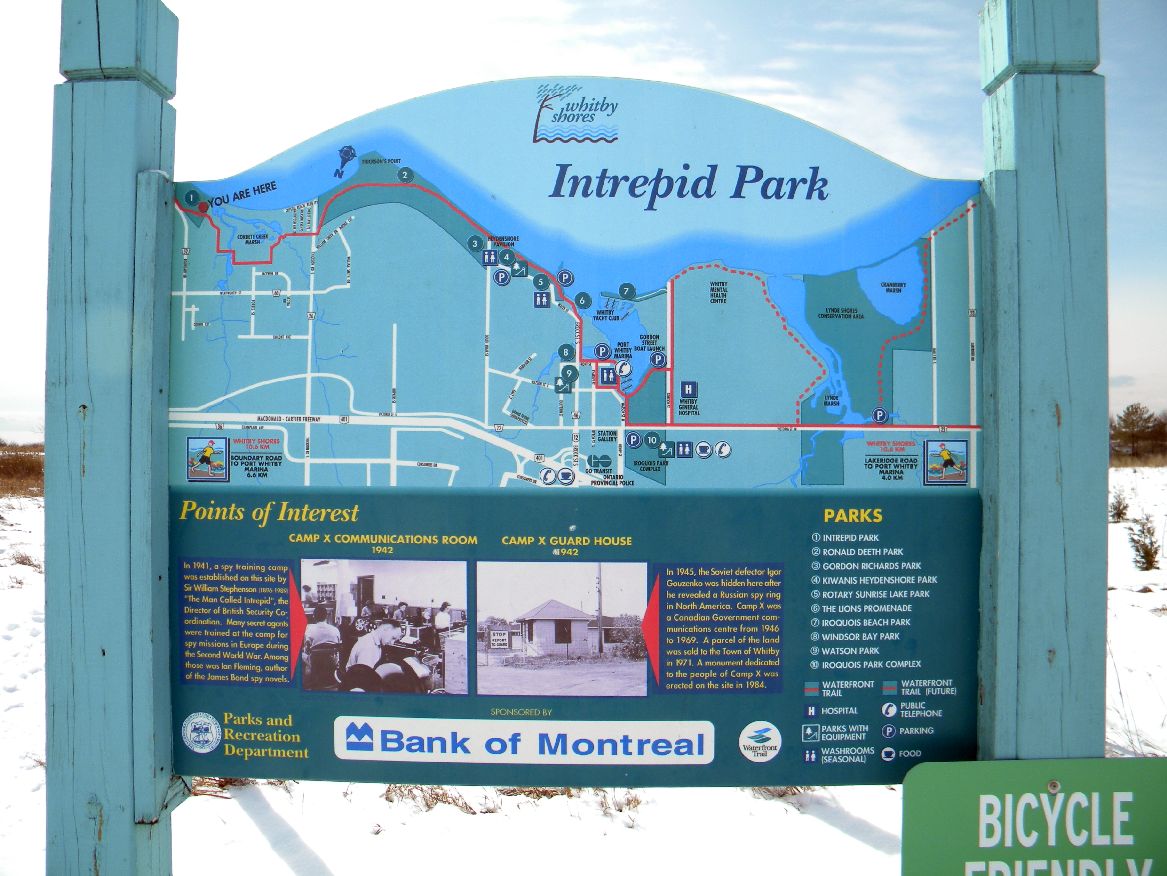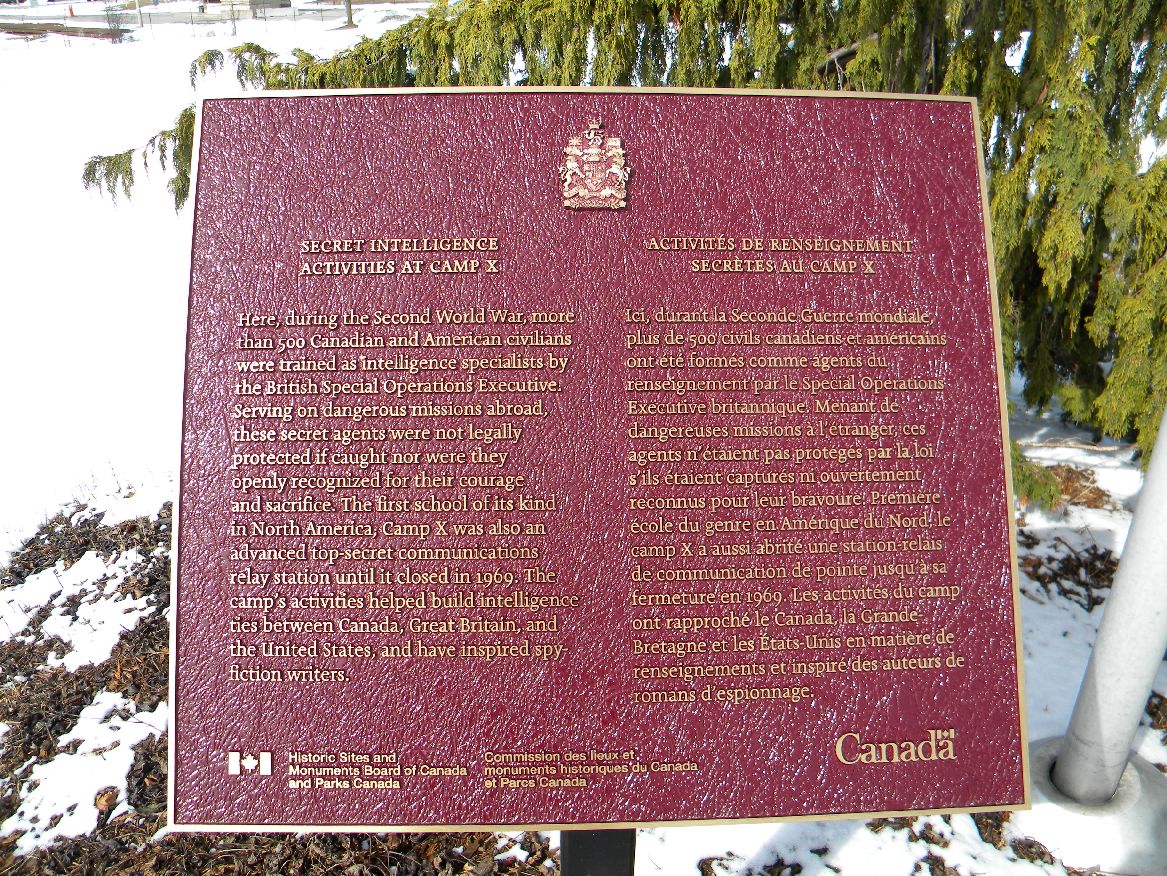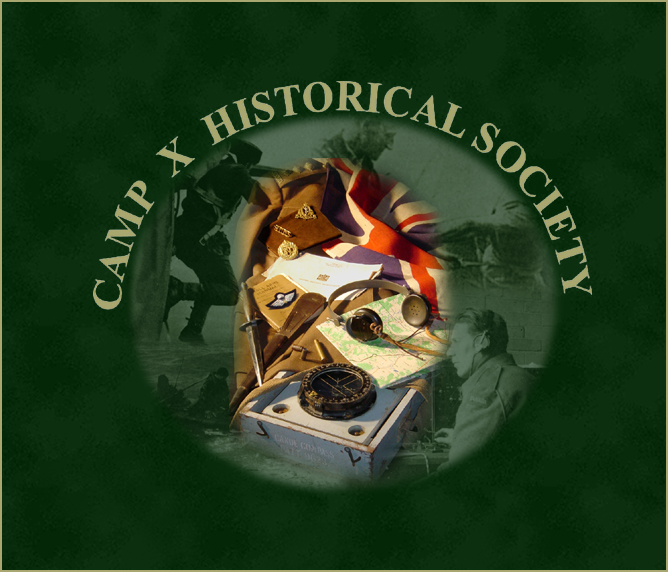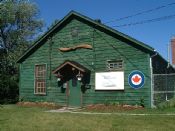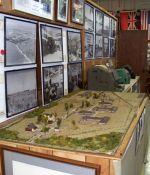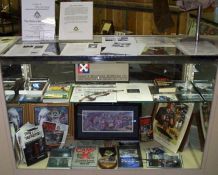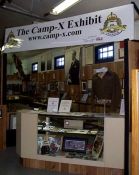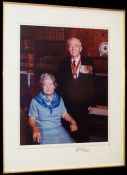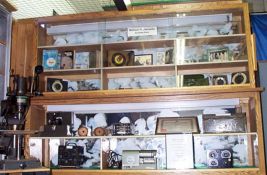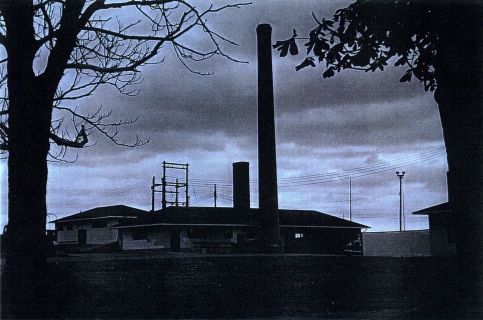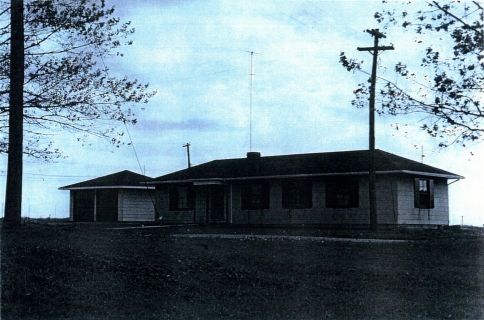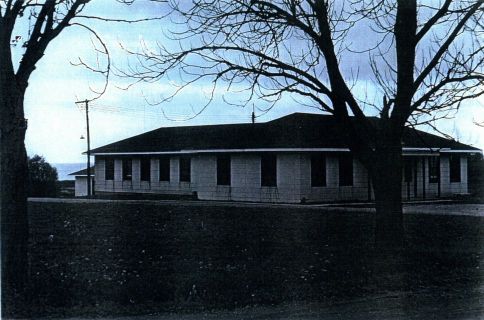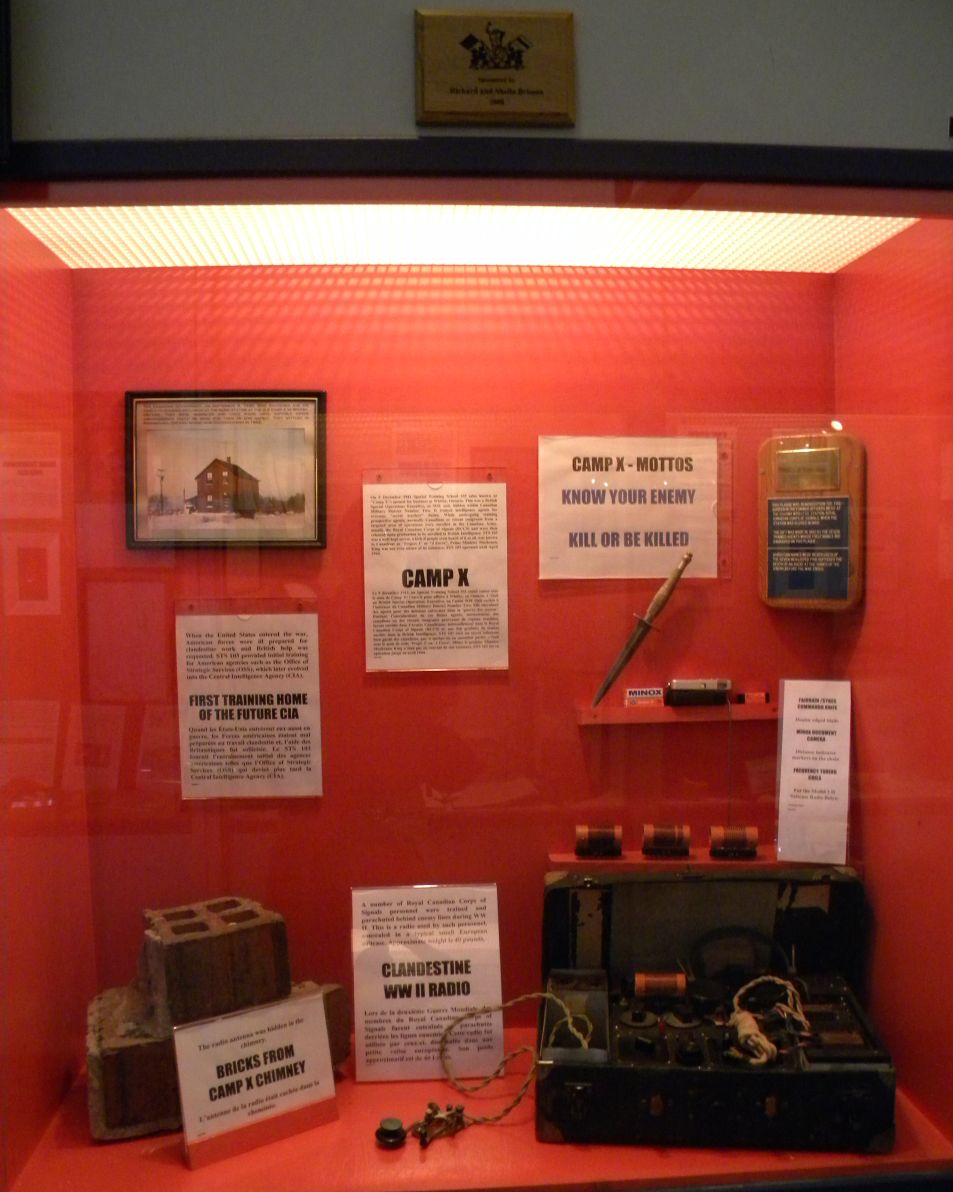| Lien Photo
| Description
| Commentaires / Questions
| Information Web et photos additionnelles
|
 Cliquez pour une plus grande photo
Source: Collection personnelle
Cliquez pour une plus grande photo
Source: Collection personnelle
|
Écussons British Security Coordination (BSC) - circa 1944.
|
Ces écussons furent acquis en 2006. Sir William Stephenson était en charge du BSC à New York pendant la Deuxième Guerre mondiale et jusqu'à 1947.
|
Voici un site Wikipedia concernant le BSC.
Un ensemble de ces écussons s'est vendu en novembre 2013 pour plus de 2200$ USD - voici le
lien eBay avec description et photos (si encore présent car
eBay retire ces liens 90 jours après la clôture des enchères).
|
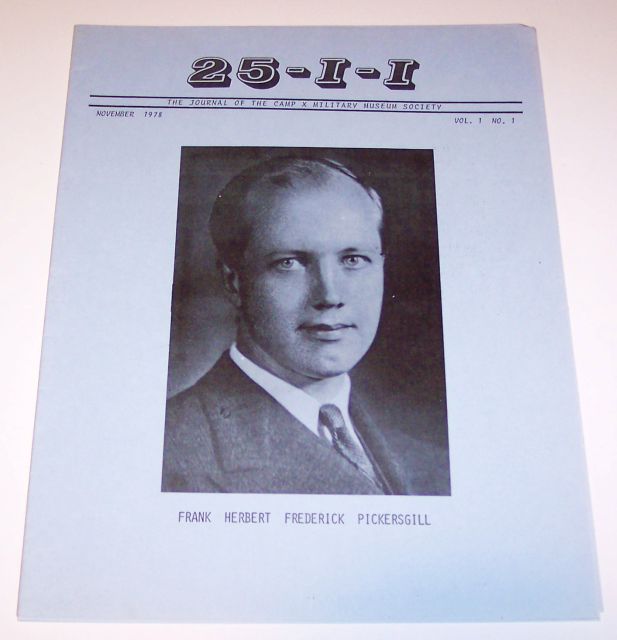 Cliquez pour une plus grande photo
Source: Collection personnelle
Cliquez pour une plus grande photo
Source: Collection personnelle
|
Journal du Camp X Military Museum Society - Première édition datant de novembre 1978.
|
Première édition originale du Camp X Military Museum Society - Vol. 1 No. 1. Frank Pickersgill étant photographié sur la page couverture.
|
Voici un site Wikipedia concernant Frank Pickersgill.
|
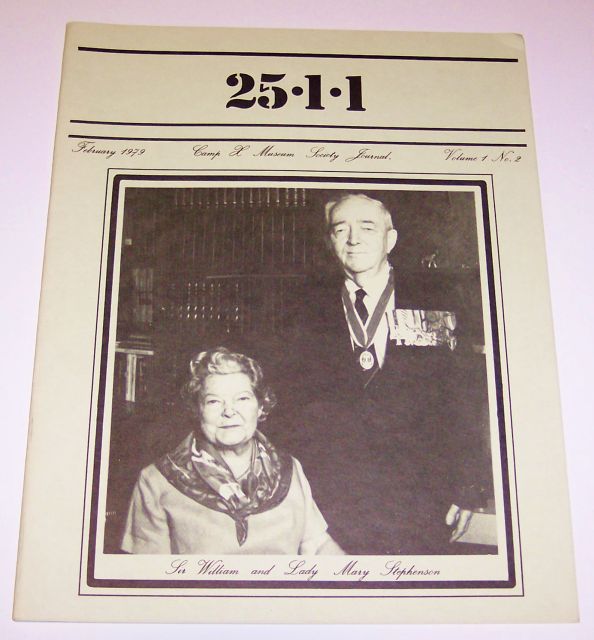 Cliquez pour une plus grande photo
Source: Collection personnelle
Cliquez pour une plus grande photo
Source: Collection personnelle
|
Journal du Camp X Military Museum Society - Seconde édition datant de février 1979.
|
Seconde édition du journal du Camp X Military Museum Society - Vol. 1 No. 2. Sir William Stephenson et son épouse Lady Mary sont
photographiés sur la couverture.
|
Voici un site Wikipedia concernant Sir William Stephenson.
|
 Cliquez pour une plus grande photo
Source: Collection personnelle
Cliquez pour une plus grande photo
Source: Collection personnelle
|
Journal du Camp X Military Museum Society - Troisième édition datant des mois d'août/septembre 1979.
|
Troisième édition du journal du Camp X Military Museum Society - Vol. 1 No. 3. Une perspective plutôt sombre et mystérieuse
sur la couverture. Un article dans ce journal est celui sur le long-métrage anglais "A Man Called Intrepid" qui comprend une transcription
d'une entrevue avec l'acteur David Niven qui avait joué le rôle de Sir William Stephenson dans le film.
|
Voici un site Wikipedia sur David Niven.
|
 Cliquez pour une plus grande photo
Source: Collection personnelle
Cliquez pour une plus grande photo
Source: Collection personnelle
|
Journal du Camp X Military Museum Society - Quatrième édition datant de 1980.
|
Quatrième édition du journal du Camp X Military Museum Society Journal - Vol. 1 No. 4. Une silhouette de Sir William Stephenson
paraît sur la couverture. Voici un extrait assez intéressant dans cette édition (en anglais):
25-1-1 Decrypted
Throughout its existence, Camp X was shrouded in secrecy. Staff and trainees, as well as local residents knew of it
as "the camp" or Camp X. British Security Coordination referred to it as `the farm', a term which was adopted by OSS,
for their Virginia installation.
In reality, this magnificient 275-acre property, which had been acquired from the Sinclair family by Stephenson's
Canadian office in 1941, was the site of the most arcane wireless and special training facilities ever constructed in
North America, up to that time.
It became operational under SOE designation STS (Special Training School) 103, on 6 December, 1941, one day before
Pearl Harbour. In the sense that it was a link in the world-wide chain of SOE training schools, Camp X was of international
importance. In the sense that it was a Canadian operation, under the aegis of MI-6 chief of operations in the western
hemisphere, William Stephenson, a Canadian, it is a major part of a unique Canadian historical legacy, which exemplifies
the traditional cooperation between our major founding nations. No fewer than 500 persons were trained there, including
scores of French-Canadians, who were ideally suited for service in SOE's F-Section. Numerous other ethnic groups were
represented as well, both in the composition of the staff, and that of trainees.
In official records, it was, and is still referred to by the National Defence Act File No. S25-1-1. Officers, staff and
agents alike were given a security pass and bracelet, bearing the operational code S25-1-1.
We therefore dedicate this record of their achievements, to the men and women who served an honourable cause, with
distinction, under the sponsorship of BSC/SOE/OSS, both in the field, and in support roles here and abroad.
|
Voici un site Wikipedia concernant Sir William Stephenson.
|
